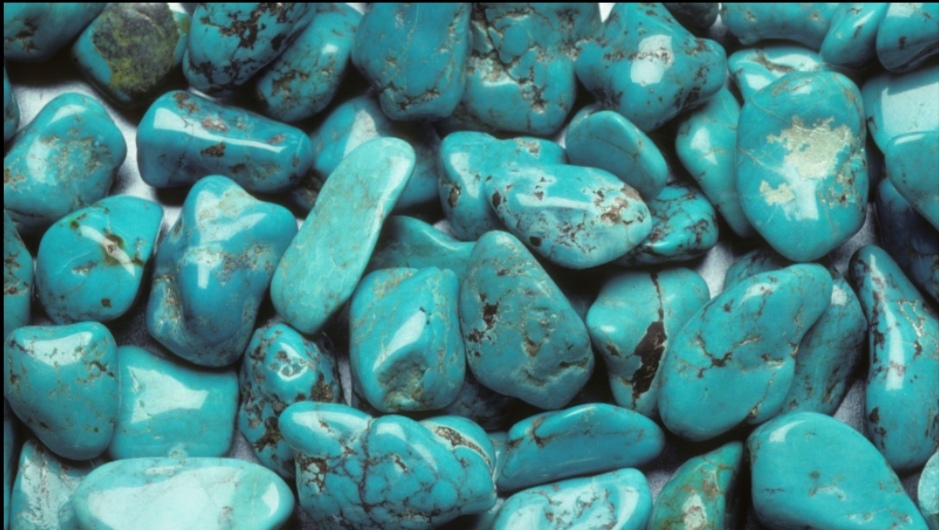Turquoise, an ageless gem that supplies allure and mythical meaning in intriguing colors, has been valued by civilizations of record for thousands of years. But its allure has also meant it has been imitated. Nowadays, the mass of the commercial market is full of all sorts of fake, dyed, and ‘reconstructed’ stones that try to pass off as the real thing because accessing genuine Turquoise gemstones is difficult these days.
Before buying Turquoise stones, learn what to look for that will point out Turquoise crystals or counterfeits so you won’t drop your money on something that isn’t authentic.
Turquoise Characteristics
1. The Color Spectrum
Turquoise gemstones tend to come in a variety of colors, including soft sky blue to deep greenish blue with natural matrix (veining) running through it. The origin of the stone determines whether these matrices are black, brown, or tan.
Tip: Avoid stones that are overly blue or have a uniform color, as these may have been artificially enhanced.
2. Natural Texture
Natural Turquoise cabochons are characterized by a porous texture. High-quality Turquoise stones can be polished into a smooth finish, but when examined closely, will show subtle irregularities.
Tip: If it feels plastic, it’s probably fake. Genuine Turquoise gemstones have an earthy feel.
How to Test for Authenticity
3. The Scratch Test
Although Turquoise cabochons have a relatively low Mohs hardness (5 to 6), they are considered soft. Gently scratch an inconspicuous part of the stone in question with a steel pin or a knife. If you can scratch the Turquoise crystal, then it is likely an imitation, such as dyed howlite. Real Turquoise gemstones will resist scratching.
Warning: Do this test carefully so you do not damage a real stone.
4. The Acetone Test
Many dyes are used to imitate Turquoise stone’s color. For testing dyes, just dab acetone or nail polish remover onto a cotton swab and rub gently on a small area. If the stone’s color comes off, it’s probably been artificially dyed.
5. Heat Sensitivity Test
Fake Turquoise gemstones made out of plastic resin will melt or give off a chemical odor when heated. Natural Turquoise cabochons are not altered by moderate heat.
Common Turquoise Imitations
6. Dyed Howlite or Magnesite
White stones like howlite and magnesite and opal gemstones are often dyed to resemble Turquoise cabochons. These stones share a similar veined appearance but differ in composition and weight.
Spotting the Fake: Dyed stones usually show overly uniform or neon-like blue tones. Their lighter weight can also be a giveaway.
7. Reconstituted Turquoise
Small bits of Turquoise stones are ground into powder, mixed with resin, and shaped into stones. Although Turquoise gemstones are technically used for these, they are not considered natural.
Spotting the Fake: Reconstituted stones usually have a plastic-like sheen or a uniform color pattern.
8. Plastic or Glass Imitations
Plastic or glass stones, completely fake but painted to look like Turquoise crystals, lack the heft, cool feel, and intricate veining of genuine Turquoise stones.
Spotting the Fake: Take the stone in your hand; genuine Turquoise cabochons feel cool and heavy, while plastic feels warm and light.
Tips on Buying Genuine Turquoise
9. Choose a Trusted Seller
Good sellers provide information about the origin of their stones, whether they have been treated, and may offer a certificate of authenticity.
Whether you are looking for genuine Turquoise crystals or searching for high-quality gemstones, you can find a trusted source at GemstonesForSale to choose ethically sourced Turquoise stones. They’re transparent, making the experience stress-free.
10. Ask the Right Questions
Before you buy, ask questions like:
- Where is this Turquoise gemstone from?
- Was it treated or stabilized?
- Does it have certification?
Real Turquoise stones can be more expensive than you think, so just make sure you’re not getting a deal that’s too good to be true.
Caring for Your Turquoise
To preserve your Turquoise gemstone’s natural beauty:
- Avoid Chemicals: Harsh chemicals, perfumes, and cleaning agents can damage the surface.
- Limit Sun Exposure: Prolonged exposure to sunlight can fade the color.
- Store Carefully: Wrap your Turquoise stone in a soft cloth to protect it from scratches and keep it dry.
Conclusion: A Genuine Turquoise Guide
Turquoise crystals are not just regular gemstones; they symbolize history, culture, and untold beauty. Using this guide, you’ll be able to tell the real deal from fakes. When you buy, you can do so confidently, knowing you’re getting a product worth its price tag.
If you are looking for real, high-quality Turquoise cabochons, then GemstonesForSale has a large selection of verified stones. Browse their collection and discover the perfect Turquoise gemstone or jewelry piece for your collection.

